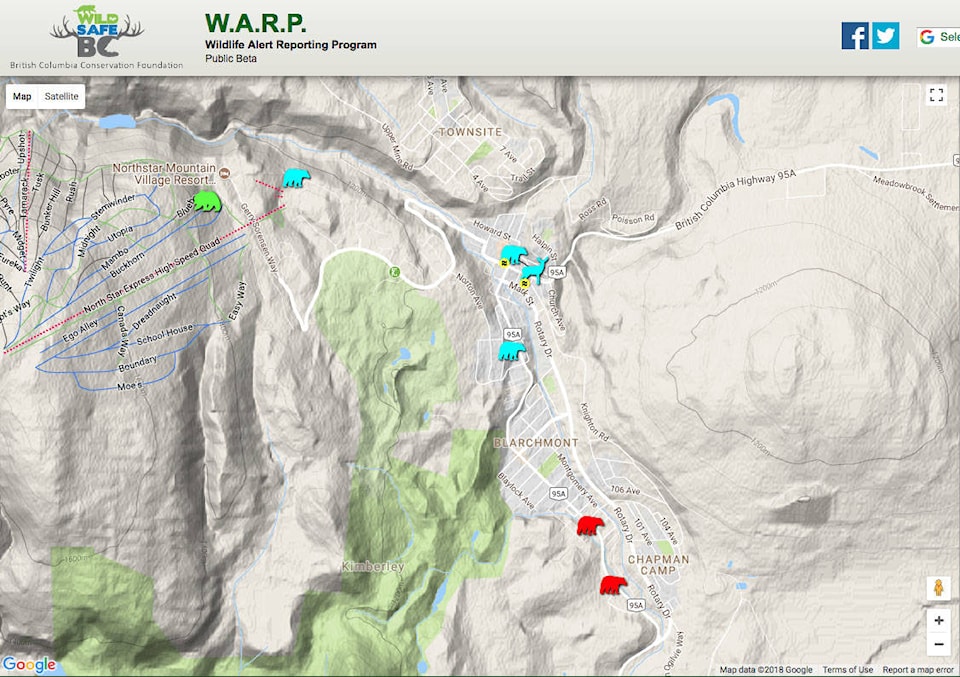According to WildSafeBC Kimberley-Cranbrook, a bear was reported accessing garbage left outdoors on Dogwood Drive in Kimberley on Thursday, May 17, 2018.
Danica Roussy, Community Coordinator for WildSafeBCKimberley-Cranbrook says that the bear not only caused extensive property damage, but human-wildlife conflict as well.
“Garbage is a wildlife attractant! Regardless of where you live in town or if you are just visiting for the weekend, keep your garbage stored indoors, keep barbecues clean and secure all other attractants such as pet food and bears will move on,” WildSafeBC noted on their website, adding the following advice.
“Keeping garbage indoors between the collection days and keeping other attractants inaccessible to wildlife is the most effective way to keep people safe, prevent property damage, and avoid the unnecessary killing of bears that come into conflict with people. Thank you for keeping your waste cart stored indoors between collection days. This is how to keep wildlife wild (and safe) as well as our communities.”
When and who to call
Residents are reminded that if you see or have issues with wildlife, contact the Conservation Officer Service at 1.877.952.7277, available 24 hours a day, seven days per week.
This information, says Roussy, is passed along directly to the local branch of Conservation Officer Service, where it is recorded and, depending on the wildlife issue, will be responded to.
Also remember, that the City of Kimberley Bylaw Officer Kim Tuff is also available at 250.427.6460.
Does in fawning period
“It is also important to remember that late May through June is historically the time of year that does give birth to their fawns. Does drive away their offspring from the previous year and look for a secluded place to give birth,” said Roussy. “Deer have one or two fawns per year and triplets do occur once and a while. The white-spotted fawn relies on its colouration, lack of scent and silence for protection. It is quite common for does to leave fawns hidden while they forage in the area, returning occasionally to nurse. If you come across a fawn, it is best to leave it alone.”
It is also important to remember, says Roussy, that does with fawns are very wary of their surroundings and can act or react aggressively if they feel threatened.
“Give the deer plenty of space to either move or leave the area,” Roussy said. “Do not walk closer to the deer, choose another route. Be sure to walk your dog on a leash and be ready to let go of the leash if the deer attacks.”
For more information contact WildSafeBC at 250.908.8101, email kimberley@wildsafebc.com, visit their website at www.wildsafebc.com, or check out their Facebook Page.
